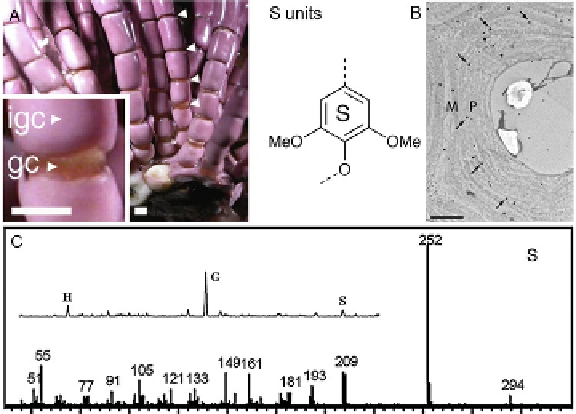Biology Reference
In-Depth Information
Plant cell walls arose as a barrier to cope with osmotic problems in the
aquatic environment (
Gerhart and Kirschner, 1997
). Usually, origins of cell
walls that will allow land colonization are attributed to the charophycean
green algae (
Sørensen et al., 2010
). These algae show some features regarding
cellulose synthase genes that are still retained in the embryophytes, although
cellulose biosynthesis has ancient cyanobacterial origins. Besides cellulose,
some components of cell wall from embryophytes, including homogalactur-
onan and xylans, are already present in charophycean algae (
Carafa et al.,
2005; Popper and Tuohy, 2010; Sørensen et al., 2010
). Other cell wall
components seem to be exclusive to land plants; xyloglucan is present in
the cell walls of all land plants but absent from charophytes (
Popper and Fry,
2003; Sørensen et al., 2010
).
Regarding the occurrence of lignins, historically algae were considered to
not have lignin polymers in their cell walls. However, recent papers question
the absence of lignins in this group.
Martone et al. (2009)
described the detection of syringyl lignin in the red
alga Calliarthron cheilosporioides (
Fig. 3
). Some seaweed contain lignin-like
compounds (
Delwiche et al., 1989; Gunnison and Alexander, 1975
), but the
Fig. 3. Lignins in a red alga, Calliarthron. (A)Whole aspect: igc, intergenicular walls;
gc, genicular walls. Scale bars represent 1 mm. (B) Immunocytochemical localization of
S units in intergenicular walls. (C) Monomers released from Calliarthron intergenicular
walls andmass spectral fragmentation pattern of DFRC S-monomers released. Adapted
from
Martone et al. (2009)
, reproduced with permission from Elsevier.

